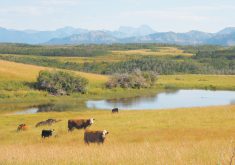You’re probably used to grain transportation constrictions costing you money and messing up your marketing plan.
Don’t be too comfortable with that uncomfortable reality.
It could get worse — a bunch worse.
If you think 2013-14 or 1996-97 were bad, be thankful they were mostly one-year phenomena.
Look over your fence line, or at the extraction sites on your land, to see an oil industry crippled by transportation strangulation. Right now, Alberta oilsands crude is selling for a shocking $14 per barrel, even lower than in the financial crisis slump of 2008. That’s way, way beneath the cost of production. Meanwhile, West Texas Intermediate, the North American light crude benchmark, is selling for more than $50, which means the low Canadian price is not because of a generally low price for oil.
Read Also

Organic farmers urged to make better use of trade deals
Organic growers should be singing CUSMA’s praises, according to the Canadian Chamber of Commerce.
It’s because of restricted pipeline capacity, and that isn’t getting better any time soon, regardless of the efforts of producers, pipeline companies and the federal government and the hopes of sane Canadians.
Getting pipelines built is a gruelling business: physically, financially, politically and legally. As well, not enough capacity has been built. It’s chronically underbuilt to meet the capacity we knew we’d need.
Which brings us to grain.
For farmers, it should be scary that we’re always pushing up against capacity. It’s one thing if we had relatively static production, and an expectation for that, but we’re in the opposite position.
Canada wants to push crop and food production much higher and export more of it. That’s great — as long as we have the export capacity.
And it’s obviously possible. We keep getting great leaps in production from crops like canola. There’s no reason to think Western Canada won’t continue to produce bigger and bigger crops.
However, the farmer won’t be the winner if he can’t get it to market. The buck stops at the farm, and if the system seizes up as crops get bigger than capacity, it’ll be the farmer who’s losing the bucks.
So look at the oil industry and think: that could be us. And start convincing your fellow Canadians that we need bigger and better railways, bridges, tunnels and ports.
You don’t want to end up like a Canadian oilsands producer.
















